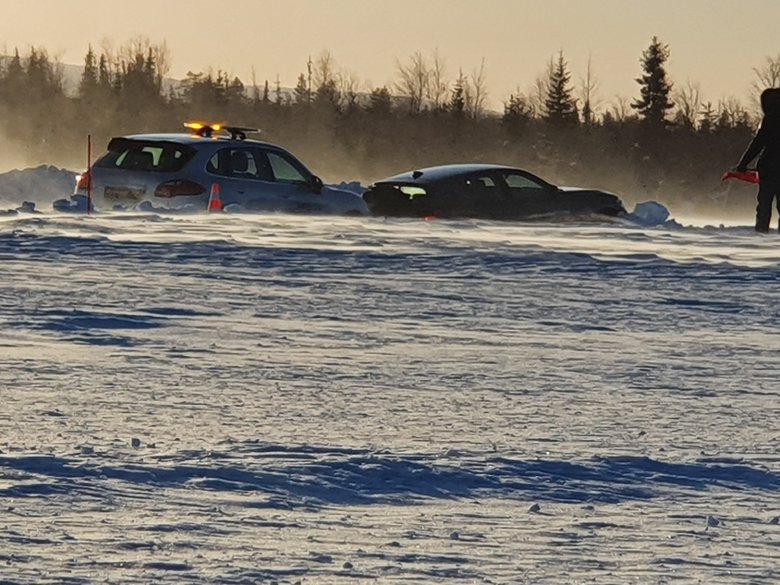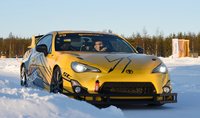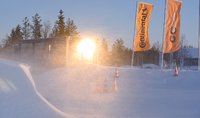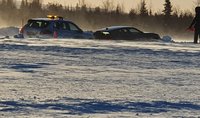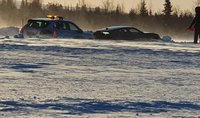Originality even in extreme cold - Continental WinterContact TS 870
The premier of the Go Original: Continental WinterContact TS 870 was planned for the European continent, and the event for the Adria region took place from 4 to 7 February 2020.
This spectacular event for all fans of innovative equipment in the world of motoring was divided into four modules.
The first module presented the comparison of new and old technology. In fact, as the successor to the TS810s model, the new TS870 model has proven its performance on a track consisting of four different surfaces: hard ice, soft ice, hard snow, and soft snow. On the BMW 120i test vehicle, the youngest member of the Continental tire family was tested in the following categories: cornering grip, acceleration, and braking. It was a great pleasure to see the new model prove superior driving characteristics on all surfaces compared to the old one – which is especially evident in rear-wheel drive vehicles, such as BMW 1 Series, where the rear-end control of the vehicle is much more difficult in more demanding curves and at higher speeds.
How difficult is the vehicle control on ice was also shown by the fact that the official rescue car Porsche Cayenne had too much work to do with some drivers, which is evident from the photos in the gallery.
The second module compared driving safety in winter conditions with adequate versus inadequate pneumatics on VW GOLF VII GTI test vehicle. This time, the pneumatics for summer, winter, and special pneumatics for ice were tested on the track – with common goal, to show their performance in real winter conditions. Only after the test in polar cold conditions, can be clearly seen the huge difference between driving with the real winter pneumatics (in this case, the premier WinterContact TS 870 model) and summer pneumatics (Premium Contact 6), where the braking distance of the summer one is up to 5 times longer, depending on the speed of the vehicle in snow and ice conditions. The summer pneumatics provide minimal friction on all surfaces, but the control of the vehicle is lost with every acceleration, corner entry at higher speed, and braking, which makes driving very risky from a safety point of view. However, the safest driving on this test was shown by the specialized pneumatics for snow and ice (Ice Contact 3), which are used in Nordic conditions. The difference in driving with this equipment is incomparably bigger, because such pneumatics (with nails) in certain situations behaves as if the surface is completely dry, and not covered with ice and snow.
Through the third module of this premier event, the course of performance declining of pneumatics over their lifetime is shown. On AUDI A3 35TFSI test vehicle, a new winter tire with 8mm tire tread depth, a summer tire with a half tire tread depth (4mm), and a tire with ¼ tire tread depth (2mm), showed their place on the right track. Successive acceleration and braking tests on snow, at speeds from 0 to 43 km/h, and at speeds from 43 km/h to 0 – showed that as the tire tread depth decreases, so does the tire performance. At the beginning, to a depth of 4 mm, the drop below is proportional (performance decreased for only 20%, even though the tire tread depth decreased for 50%). However, as the tire tread depth continues to decrease, the performance decreases faster, and the tire with tread depth below 4 mm loses up to 40% of performance.
Of course, all of this is also conditioned by speed, as well as the type of surface (dry, wet, snow, or surface covered with ice). As the speed of the vehicle increases, the difference of the performance increases as well, that is, the smaller the tire tread depth, the faster the performance decrease. Also, when braking on the dry road at the speed of 120 km/h, the new tire shows minimal differences in comparison to the tire with 2 mm tire tread depth. However, the situation drastically changes when it comes to the wet surface, where aquaplaning appears significantly earlier in tires with tread depth at half the lifespan (4 mm) and tread depth at the last quarter of the lifespan (2 mm), which even at relatively low speeds is not capable to discharge the water fast enough to pass such surface safely.
After the conducted tests, it is concluded that the tire has the best performance and the greatest safety reserves when is new (8 mm), up to a tread depth of 6 mm, and that the driving can be relatively safe even in the real winter conditions with tire tread depth up to 4 mm, but below that – neither the law allows it, nor it is recommended except on a dry surface.
Through the fourth module, the new technologies and their application were presented, as an extremely important part of the testing process of new pneumatics and systems in vehicles. The test vehicle – Ford Focus St was equipped with monitors, as a part of this “Virtual cockpit test”, and was operated solely by looking at monitors instead of windshield and mirrors. We have to admit that we are impressed by the latest technologies, but after such experience, it is inevitable to ask ourselves if the artificial intelligence is really a good compromise for person’s natural sense of hearing and sight.




